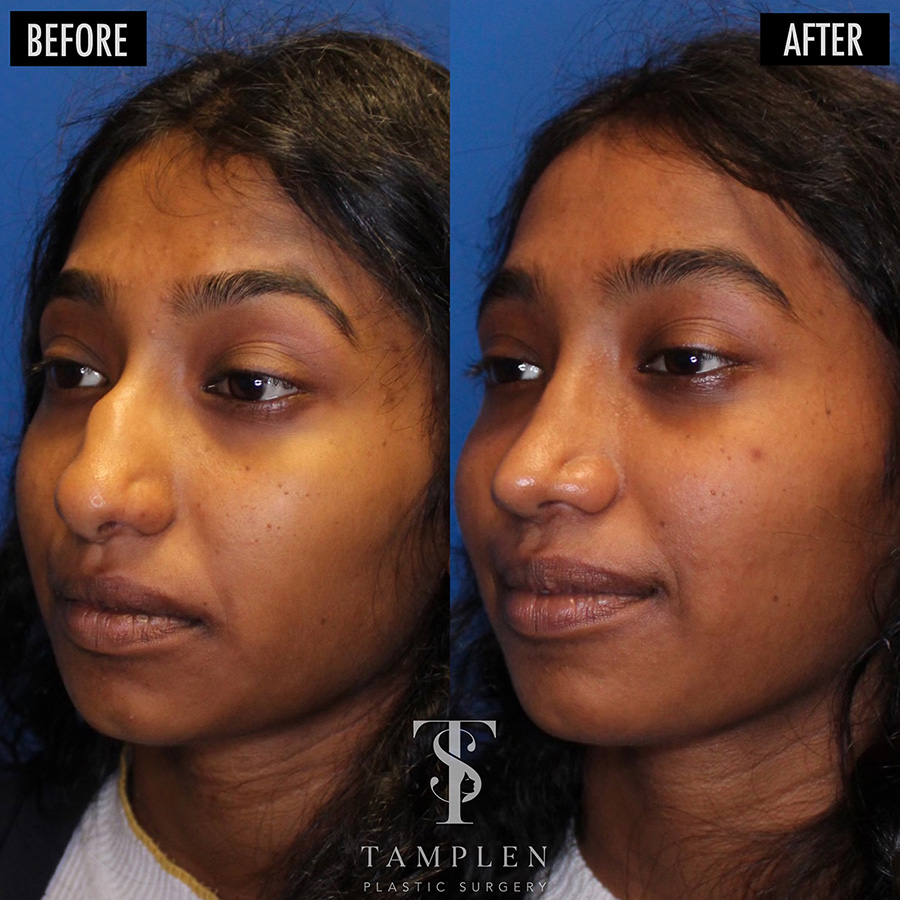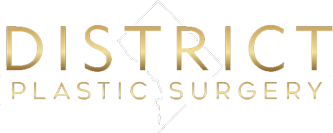
Rhinoplasty
Conveniently located to serve Washington DC, Arlington, Bethesda
JUMP TO:
What is a Rhinoplasty?
A rhinoplasty is a surgery that is used to correct aesthetic and/or functional issues with your nose. It is customized for each patient and can be used to reduce and shape the nose, increase volume and/or improve breathing. The nose can also be straightened if it is crooked due to trauma or another cause.
Who is a good candidate?
Any healthy person who desires improved aesthetics or improvement of nasal obstruction may be a candidate.
How is the procedure performed?
Each surgery is customized for your individual concerns and to match your facial aesthetic.
In some patients, all incisions are made inside the nose. This can be performed for some shaping and to address septal deviation or mechanical blockage of the nose.
An open rhinoplasty is performed for more shaping. An incision is made mostly on the inside with a small bridge across the columella (the strip of skin connecting the tip to the upper lip). The tip, hump and bone can be shaped. In some cases, just shaving down bone and reducing and shaping cartilage is performed. In some patients, the nasal bones are too wide and osteotomies are performed (breaking the bone). Sutures and splints are placed.
Recovery
Most patients are back to work within a few weeks and swelling improves steadily for several weeks (although minor swelling of the tip can last up to a year). Splints inside the nose are removed in a few days (if needed) and the external splint is removed after 10-14 days. Sutures are removed a few days after surgery.
Risks
- Revision – due to the fine detailing of rhinoplasty, thin skin and sometimes unpredictable changes in cartilage over time, a revision may be needed. Rhinoplasty has the highest revision rate of all aesthetic surgeries.
- Bleeding – usually resolves spontaneously, but sometimes requires cauterizing a blood vessel or packing
- Poor cosmesis/asymmetry – may require shaping. In patients with thick skin, detailing may be less evident and in patients with thin skin, minor asymmetries may be more noticeable.
- Infection – may require antibiotics or more surgery
- Skin necrosis – patients who have had multiple surgeries have a slightly higher risk of skin over the tip of the nose breaking down. This can lead to scarring
- Breathing issues – there is still a possibility of breathing issues after surgery
Before & After

Dr. Praful Ramineni
Plastic SurgeON IN WASHINGTON D.C.
Dr. Ramineni is the founder of District Plastic Surgery. He is board certified and has over 15 years of experience in plastic and reconstructive surgery. He started his career as one of the busiest surgeons at Medstar Washington Hospital Center with a focus on complex reconstructive surgery including cancer and trauma reconstruction, microsurgery and aesthetic surgery.

Related Content

Contact Us
